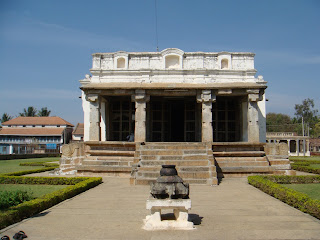
This book was a present from a friend Nikhil. First of all, thanks Nikhil for this interesting, un-putdownable book.
I should have read this one long ago but there are so many books on the shelf that I don’t know which one to pick up. That is what happens when you start reading late in life, I guess.
It is the story of three boys who are students of IIT Delhi – students who are exceptional, not because they are above all, but because they refuse to conform to the norm and end up becoming the underdogs.
They perform all kinds of experiments – play sport, do drugs, watch movies, share assignments, try sneaking into the professor’s office to steal the exam paper and all that… and then face the consequence… I will not spoil the story for you…
As the author claims, the book is not about what to do or how to fare in IIT, but what not to do in IIT.
The scene of the story is the IIT of course but I believe it is a story that every student will be able to relate to.
The story is narrated by one of the characters/protagonists, Hari, in 1st person. But there are one or two chapters where the other two students, Ryan and Alok, get to tell their side of the story.
I could finish it sooner than I had expected as the story was fast paced and full of events occurring one after the other in the lives of the three.
The language used is spoken English (with all the pauses, crutch words, colloquial and slang) and not written English. That was just an observation and not a judgment.
There is humour on every page. Throughout the reading, I had a smile on my face. Most of the humour is sarcastic.
I loved the below lines…
He took out a chalk from his pocket with a flourish that celluloid terrorists reserved for hand grenades and underlined the word machine (on the blackboard) six times.
Time dragged so slow and comatose, fun was conspicuous by it’s absence.
Alok wrinkled his pug nose as he dispiritedly plopped a thick blob of green substance mess workers called bhindi masala into his plate.he slammed two Rotis on his stainless steel plate and ignored the rest of the semi-solid substances like Dal, Raita and Pulao. Ryan and I took everything; though everything tasted the same, we would at least have some variety of colours on our plate.
Sometimes, if you just paraphrase everyone’s arguments, you get to be the good guy.
Only girls can look hot in their nightclothes. Alok, for instance, looks like a terminally ill patient, in his torn vest and pyjamas.
Alok tried to ask the professor a for a re-quiz, who stared back as if he had been asked for both his kidneys.
About playing chess – Ryan usually won and I would never be passionate about bumping off plastic pieces like him.
About excitement over CNN, an American news channel – “Until then, we had two crummy government channels, in which women played obsolete instruments and dull men read news for insomniacs and retards. Colour had only arrived two years ago and most programs were black and white.”
Professor Goyal scratched his chin in response, which meant Ryan was right.
“What are you, Commerce students?” shouted the prof.
Calling a IITan a commerce student was one of the worst insults the professor could accord to us, like a prostitute calling her client a eunuch. The institute was a temple of science and anyone below standards was an outcaste or a commerce student.
Alok had as much of an idea of romantic gifts as his mother had about cabarets.
There is something about seeing your girlfriend’s parent for the first time. I couldn’t help but notice how cherian was an extremely bad replica of Neha; like her wax statue had puffed up first and then and then begun to melt haphazardly.
Cherian had a bald spot bigger than Nirula’s hamburger. If she dressed to act in a horror movie Neha would look like her father.
Do read this one.
































































